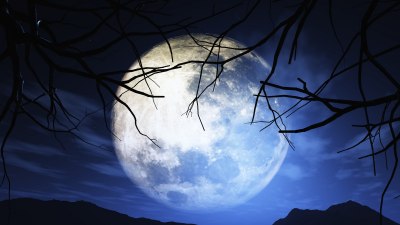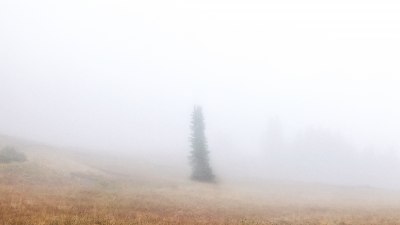How Dust from the Sahara Creates Beautiful Sunsets Across the World
Discover the fascinating role Sahara dust plays in creating stunning sunsets globally.

The Sahara Desert, one of the largest deserts in the world, spans across North Africa and is known for its vast landscapes and extreme weather conditions. However, the Sahara is not only significant due to its size; it also has an interesting impact on weather patterns and atmospheric phenomena, particularly regarding sunsets. This article explores how dust from the Sahara contributes to the beautiful sunsets we see across the globe and the science behind this captivating natural phenomenon.
Sahara dust is composed of tiny particles and minerals that are blown into the atmosphere by strong winds. Events known as dust storms can lift these particles high into the sky and transport them over long distances. The dust is then distributed across various regions, often traveling as far as the Americas, Europe, and even the Caribbean. The journey of Sahara dust is fascinating, and it is during this journey that these particles interact with sunlight, leading to the stunning colors we associate with sunsets.
The Science of Sunset Colors
To understand how Sahara dust influences sunsets, one must first understand the science of light. Sunlight appears white but is actually made up of multiple colors that can be separated into a spectrum. When the sun is near the horizon, its light has to pass through a larger volume of the Earth’s atmosphere compared to when it is overhead. This increased distance causes the shorter wavelengths of light, like blue and violet, to scatter more than the longer wavelengths, such as red, orange, and yellow. This scattering effect is known as Rayleigh scattering.
When Sahara dust particles are present in the atmosphere, they add to this scattering process. The larger particles scatter the light differently from the smaller air molecules. This scattering is particularly pronounced during sunset, as the light passes through more of the atmosphere when the sun is low on the horizon. The dust acts like a filter that enhances the reds, oranges, and yellows, creating a more vivid display of colors. The combination of these processes can result in a spectacular sunset that many people marvel at.
The Role of Humidity and Other Atmospheric Conditions
While Sahara dust plays a significant role in enhancing sunset colors, other atmospheric conditions also contribute to this stunning visual display. Humidity levels, for example, can have a substantial impact on how sunsets appear. When the air is moist, however, it can also create a backdrop that enhances the effect of the dust. Water droplets can scatter light in a different manner than dust, adding depth and richness to the sunset colors.
In addition to humidity, the presence of clouds can significantly affect the beauty of a sunset. Different types of clouds can capture and reflect light in various ways. Cumulus clouds, for example, can create beautiful contrasts as they catch the sunlight and reflect the vibrant colors pushed out by the surrounding dust. Even the altitude and size of the clouds play a role in the overall beauty of a sunset. When combined with Sahara dust, these clouds can create breathtaking visuals that range from orange and pink skies to deep purples and reds.
The Journey of Sahara Dust
Sahara dust does not just remain confined to its geographical location; it embarks on an incredible journey across oceans and continents. The winds carry these particles through the atmosphere, and during their flight, they can impact weather patterns and ecosystems in regions far from the Sahara. This long-distance transport can lead to several ecological benefits, such as fertilizing soils in the Amazon rainforest and the Caribbean, as well as influencing marine productivity in oceanic regions.
Moreover, the transport of Sahara dust can have important implications for climate. When these dust particles enter the atmosphere, they can affect cloud formation and precipitation patterns. For instance, the presence of dust can inhibit rainfall in some areas, while enhancing it in others. This delicate balance shows how interlinked weather systems are around the globe and how something as seemingly simple as dust can have far-reaching effects.
Local Impacts and Adaptations
Communities living near the Sahara desert have long adapted to the influences of dust storms and their aftermath. In some regions, traditional practices such as farming and building construction have evolved to accommodate the frequent presence of dust in the atmosphere. For example, farmers in North Africa have learned to plant crops that are more resilient to arid conditions, taking advantage of the occasional nutrient-rich dust that settles in their fields after a storm.
Furthermore, on days when dust storms are prevalent, local populations may wear masks or cover their eyes to protect themselves from inhaling dust particles. Schools and outdoor activities often adapt to weather conditions influenced by Sahara dust. These adaptations demonstrate human resilience and the ability to harmonize with nature, even in challenging conditions.
Health Considerations
While beautiful sunsets may be a positive result of Sahara dust, it is important to also consider the health implications of dust exposure. Inhaling dust can lead to various respiratory issues, especially for individuals with pre-existing conditions such as asthma or allergies. Increased particulate matter in the air can cause discomfort and health complications, particularly for vulnerable populations such as children and the elderly.
As dust from the Sahara travels across the ocean to reach different regions, it can also have mixed effects on air quality in those areas. Awareness regarding the potential hazards of dust exposure and the impact on health becomes critical, particularly during peak dust storm seasons.
Cultural Significance of Sunsets
Beyond the scientific and ecological perspectives, sunsets are often rich in cultural significance. Across various cultures, beautiful sunsets have inspired artists, poets, photographers, and everyday people to appreciate the transient beauty of nature. The colors that illuminate the sky can evoke emotions ranging from peace and tranquility to inspiration and awe.
In many places, rituals and gatherings are organized around sunset times. Communities come together to witness the setting sun, often celebrating its beauty as a reflection of day transitioning into night. These moments create a sense of unity and appreciation for the natural world and its cycles, reminding us of our own fleeting experiences in life.
The Dual Nature of Dust
In conclusion, while the dust from the Sahara Desert can evoke a sense of beauty through its contribution to stunning sunsets globally, it also presents challenges concerning health and environmental impacts. The interplay of science, atmosphere, and human culture creates a complex relationship with the dust. Through appreciation of the beauty while being mindful of the disadvantages, we can foster a deeper understanding of our environment and the wonders it presents. As we witness a breathtaking sunset illuminated by Sahara dust, let us remember that beauty and challenges coexist, sharing a narrative woven into our world.











